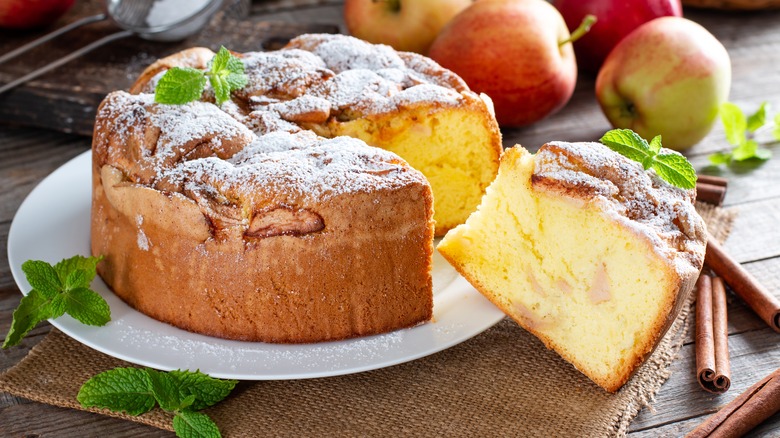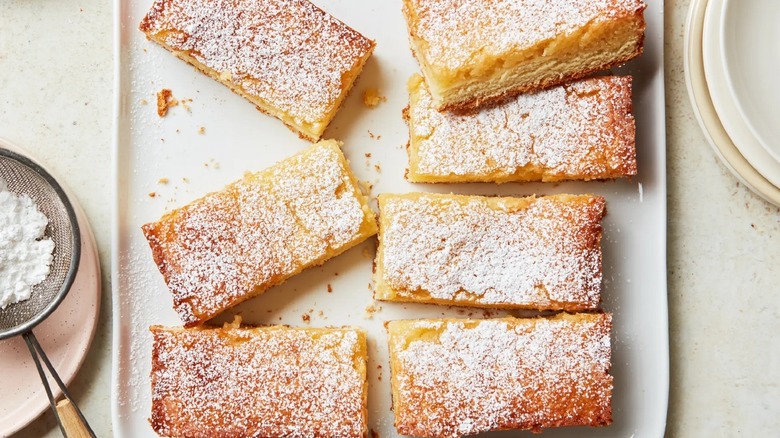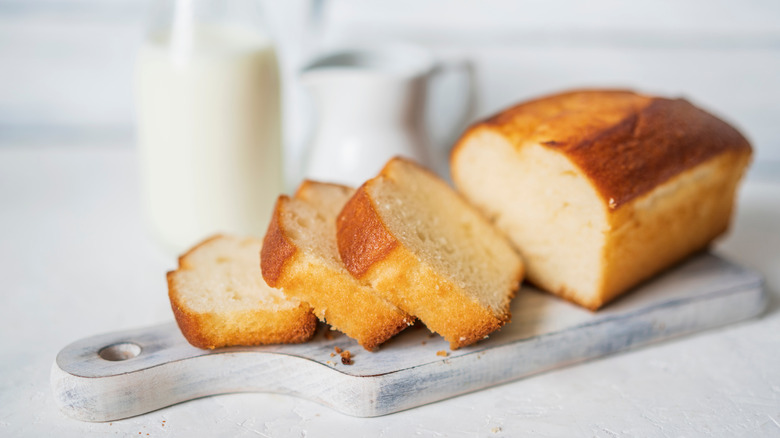What Is The Difference Between Butter Cake And Pound Cake?
If you have even a small sweet tooth, then you probably enjoy a nice piece of cake from time to time. But unless you're a dessert expert, you may not know the difference between two very similar types of cake: butter cake and pound cake. After all, the two look almost the same and both have a rich buttery taste. They're also both often (yet not always) made in the shape of a Bundt cake. Yet they do have key differences.
Despite the similarities in taste, pound cakes have a much denser texture, while butter cakes are lighter and have a bigger volume. The difference in texture will be quite noticeable in your experience of eating each of the cakes, even though they use many of the same ingredients and have a similar flavor. Lucky for cake lovers, both exist and we can enjoy that buttery taste in either a light and fluffy form or a much thicker and denser cake — both of which have easy cooking processes that anyone can learn how to do.
What to know about making butter cake
The ingredients for butter cake include softened butter (preferably unsalted), sugar, eggs (at room temperature), vanilla extract, flour, salt, baking powder, baking soda, and buttermilk. The buttermilk is one of the most important ingredients here, as it is what leads to the cake being moist. Also, getting the baking powder and baking soda amounts just right is key, as those are the ingredients that lighten the cake and keep it from becoming dense. You also need to be specific with the amount of flour you use. And if, for whatever reason, you opt to use regular milk instead of buttermilk, whole milk is best in order to achieve that rich flavor.
There are some important details of the process to keep in mind, such as adding in the eggs one at a time. Additionally, you need to mix in the dry ingredients — which are initially combined in a separate bowl — in sections, mixing in the buttermilk in between. These steps may seem small and inconsequential, but they make a difference in the overall texture of the cake — which, as we know, is what really differentiates a butter cake from a pound cake.
What to know about making pound cake
Now that we've covered butter cake, let's move on to its denser counterpart, the pound cake. You may have heard before that pound cake gets its name because it requires a pound of sugar, a pound of butter, and a pound of flour, at least in the oldest known recipes of the dessert. Nowadays, that's not necessarily the case.
A modern pound cake recipe calls for unsalted butter, sugar, vanilla extract, salt, and flour, as well as six wholes eggs and six more egg yolks (12 eggs total). The large amount of egg yolks are what create the custard flavor undertones. It's important not to use all of the egg whites because that would make the cake much lighter and fluffier — which is exactly what we don't want with a pound cake. Similarly, there's often no baking powder in a pound cake recipe because that would also lead to the cake rising and becoming fluffier (like for the butter cake). If a recipe does include baking powder, then it will be in a very small amount, such as ½ teaspoon.


